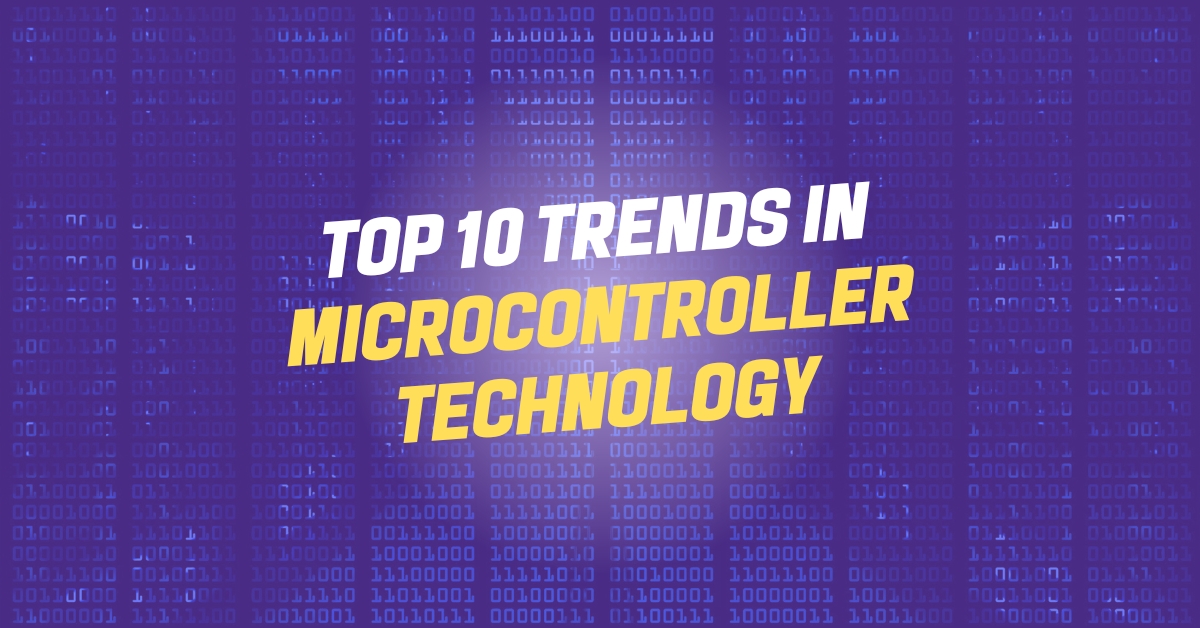In the world of embedded systems, microcontrollers are the foundation of innovation. These tiny computing devices have undergone remarkable advancements over the years, pushing forward the growth of various industries, such as automotive and healthcare. The transformative power of microcontrollers in these fields is not to be underestimated. From helping to control sophisticated automotive features to facilitating precision medical procedures, microcontrollers are at the forefront of cutting-edge technological developments. As we continue to explore the vast potential of embedded systems, we can be sure that microcontrollers will remain an indispensable component of the exciting field.
Ultra-Low Power Consumption
The quest for ultra-low power consumption takes the lead in microcontroller technology trends. With the proliferation of battery-powered devices in IoT, wearables, and remote sensors, optimizing power efficiency has become paramount. Advanced fabrication processes, such as FinFET technology, enable microcontrollers to achieve unprecedented levels of power efficiency. Furthermore, dynamic power management technologies, including adaptive voltage scaling and clock gating, allow microcontrollers to operate within a frugal power envelope, extending battery life.
Integration of AI and Machine Learning
The integration of Artificial Intelligence (AI) and Machine Learning (ML) capabilities into microcontrollers is reshaping the landscape of edge computing. The ned for real-time decision-making in applications like image recognition, natural language processing, and predictive maintenance drives this trend. Microcontrollers with dedicated AI hardware accelerators like Neural Processing Units (NPUs) and Tensor Processing Units (TPUs), execute complex ML algorithms with minimal power consumption. This evolution opens new frontiers in autonomous systems, smart sensors, and intelligent automation.
Enhanced Connectivity Options
In an era dominated by the Internet of Things (IoT), microcontrollers must be highly connected. From traditional wired interfaces like Ethernet and CAN bus to cutting-edge wireless technologies such as Wi-Fi 6, Bluetooth Low Energy (BLE), and Narrowband IoT (NB-IoT), microcontrollers are incorporating a diverse array of connectivity options. Integrating multiple communication protocols within a single microcontroller chip is becoming commonplace. This enables interoperability between devices, facilitating the creation of robust IoT ecosystems.
Security and Trustworthiness
As technology advances, the importance of securing sensitive data against cyber threats becomes increasingly crucial. Modern microcontrollers have risen to the occasion by incorporating a wide range of security features, including hardware-based encryption, secure boot, and trusted execution environments. Moreover, these microcontrollers have environments. Moreover, these microcontrollers have received advanced security certifications, such as Common Criteria and FIPS 140-2, to guarantee their robustness against external attacks. With these protective measures in place, microcontrollers can now play a critical role in safeguarding sensitive information and preventing unauthorized access to essential systems. As businesses continue to store more data online, the security provided by modern microcontrollers will only become more important.
Multi-Core Architectures
To cater to the increasing demands of complex applications, microcontrollers are embracing multi-core architectures. This trend allows for the parallel execution of tasks, enabling real-time processing of diverse data streams. Microcontrollers are now equipped with dedicated coprocessors for tasks such as cryptography, digital signal processing, and graphics acceleration. This not only enhances the overall processing power but also offloads the main CPU, resulting in improved efficiency and responsiveness.
Edge Computing Capabilities
Modern microcontrollers utilize cutting-edge security features to ensure the protection of sensitive data and systems against cyber threats. These advanced security features include hardware-based encryption, secure boot, and trusted execution environments. Additionally, microcontrollers boat security certifications, such as Common Criteria and FIPS 140-2, further emphasizing their robustness and reliability. These security measures are crucial in safeguarding against unauthorized access and maintaining the confidentiality, integrity, and availability of critical systems. As technology continues to evolve, the importance of secure microcontrollers will undoubtedly increase, making them an integral component in the field of cybersecurity.
Flexible and Reconfigurable Architectures
The pace of technological development in microcontrollers has been on a steep upward trajectory. Advances in fields like FPGAs and CSoC solutions have opened up a new possibilities for customization and flexibility. With these technologies, developers can design microntrollers that adapt to a range of specific applications in a way that was previously impossible. This level of adaptability is a huge boon for engineers and developers, as it empowers them to create more effective and efficient microcontrollers that align with their particular needs. As this trend continues, we can expect the scope and capabilities of microcontroller technology to expand even further, with profound implications for the industries and sectors that depend on it.
Real-Time Operating Systems (RTOS) and Middleware
With the exponential increase in embedded applications’ complexity, the demand for highly advanced Real-Time Operating Systems (RTOs) and middleware solutions is at an all-time high. These intricate software layers have become necessary for multitasking, scheduling, and communication in real-time, enabling microcontrollers to execute complex tasks with the most accuracy and efficiency. This development is particularly significant in industries such as automotive, aerospace, and medical devices. As the industry continues to evolve, it is essential to keep abreast of the latest technological advancements to meet the growing demand for precision and efficiency in embedded systems design and development.
Advanced Sensing and Actuation
With the constant evolution of microcontrollers, it is evident that they have come a long way since their inception. The advanced sensors and actuators integrated into modern microcontrollers make them capable of engaging with the physical world more intricate than ever before. With precision accelerometers and gyroscopes, they can detect even the slightest movement, while environmental sensors can pick up on temperature, humidity, and even the presence of harmful gases. This incredible array of sensors and actuators allows microcontrollers to gather and analyze rich data, opening up endless possibilities for applications in fields such as robotics and environmental monitoring. The level of sophistication exhibited by modern microcontrollers indicates that the future holds even more exciting developments in their field.
Continued Miniaturization and Integration
As technology continues to evolve at an unprecedented pace, the demand for smaller yet more powerful microcontrollers becomes increasingly prominent in various applications such as medical implants, wearables, and compact IoT nodes. The ability of these devices to pack significant computational power in such a tiny footprint is nothing short of remarkable. The integration of essential components, such as memory and communication interfaces, onto a single chip significantly reduces the overall cost and complexity of microcontroller-based systems. The trend is a testament to the tireless effort of technologists and engineers who strive to push the boundaries constantly, enabling the creation of new possibilities in the field of technology.
The Wrap Up
The field of microcontroller technology is constantly evolving, driven by the ever-increasing demands of a connected and intelligent world. Among the factors driving this rapid evolution are ten key trends that promise to revolutionize industries and usher in a new era of innovation. From ultra-low power consumption to continued miniaturization, these trends are poised to have a significant impact on industries such as IoT, automotive, and healthcare, among others. As we stand at the forefront of this technological frontier, it is clear that the potential for innovation is limitless. The ten trends that are shaping the world of microcontroller technology offer a glimpse of the exciting possibilities that lie ahead.
Learn more at Octopart and IoT Analytics.







































